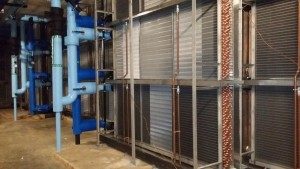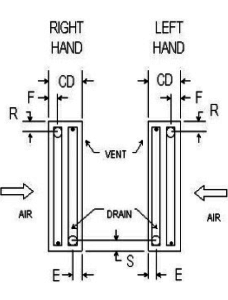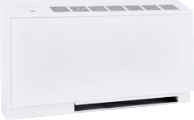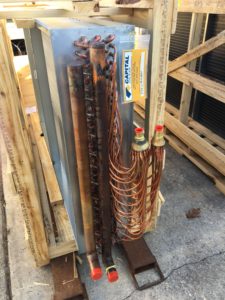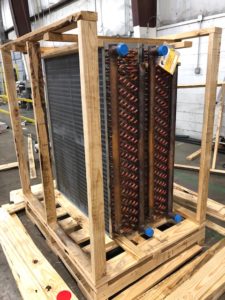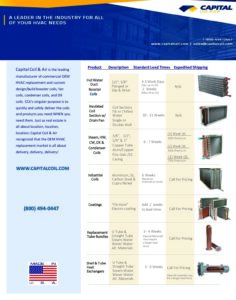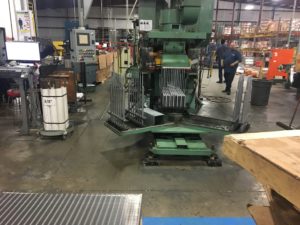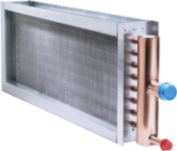Moisture carryover is present on cooling coils where dehumidification happens. Many people do not think it’s a problem…until you have moisture running down ductwork or spewing all over the inside of an air handler. If you’ve ever experienced that then you probably know all of these rules regarding moisture carryover.
- Capital Coil does not typically build chilled water or DX (Evaporator) Coils over 50” in height. For example, with applications that call for a 96” high coil, we will build (2) 48” high coils and stack them with an intermediate drain pain. We do this for a couple reasons: first, the shipping & handling is far easier and there’s less chance for damage before the coil even gets to the job-site. Second, the drain pan in the bottom of the unit for a 96” high coil would be enormous, and it would be practically “raining” off the top of a coil 96” high.
- Air velocity for cooling coils should never be higher than 550 feet/min!!! Anything higher and you are asking for complications. You’d be surprised how many manufacturers do not know that and/or won’t tell you that to keep you out of trouble.
- Entering air temperatures of 80/67 of return air in the Northeast carry far less moisture than an outside 95/78 entering air temperature in Florida. Outside air always has more moisture.
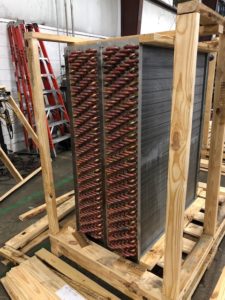
-Your location plays a part as well. The drain pans will absolutely have be sized differently. Florida’s will be much larger in size.
- Fin design is irrelevant when it comes to moisture carryover. Whether you have copper corrugated fins, or aluminum flat fins, plate fins or even the old fashioned spiral fins, none of it has any effect on moisture carryover.
- Lastly, be careful when installing a new chilled water or DX (Evaporator) Coils in a system. Many end users like to increase the airflow on older coils because those old coils can act like filters, the fins are covered in dirt/dust and you’re not getting the same airflow through the coil. This dirt on the coil also semi-prevents moisture carryover. When that brand new chilled water coil is installed, the airflow might be higher than that of 550 ft/minute, which of course will cause moisture carryover problems.
Please give us a call with any questions about your coil, your system or its design. Capital Coil is here to help you avoid situations like the one described in this post, and we would love for the chance to work with you!
RELATED POSTS
10 Things You Need to Know About Chilled Water Coils
